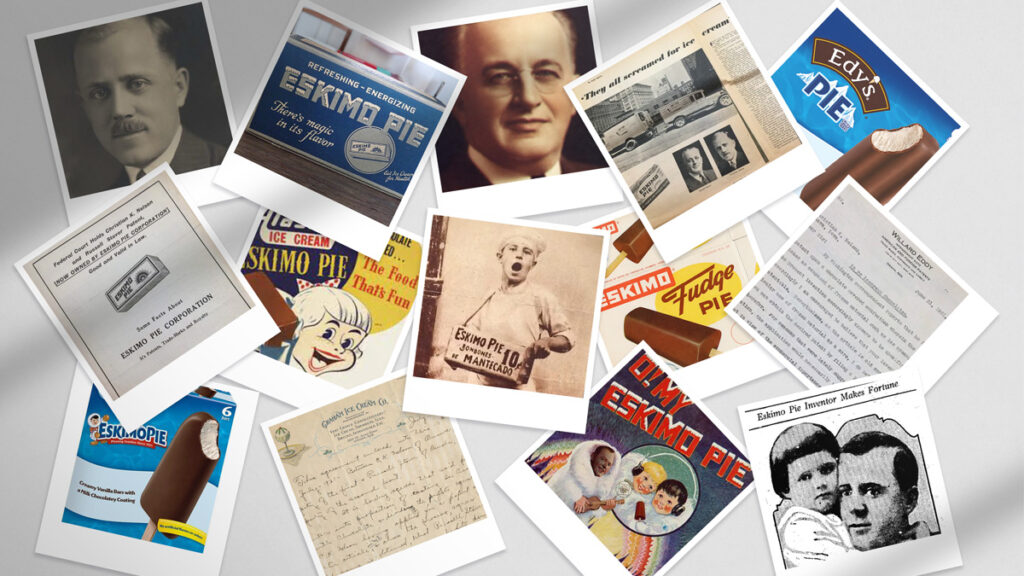How the history of ice cream highlights the importance of IP protection

The year is 1920, in a small sweetshop in Iowa, a young boy stares at a shelf with a frustrated look. He asks the store’s owner for an ice cream, then changes his mind and asks for a chocolate bar instead. The owner asked the boy why he didn’t buy both. The boy exclaims, “I want ’em both, but I only got a nickel.” This encounter gave birth to a globally beloved product and a case study on patent law and strategy.
Christian Kent Nelson, the sweetshop owner, worked day and night for weeks trying to amalgamate chocolate and ice cream. This was the 1920s and managing the combination of hot melted chocolate and cold ice cream had simply never been done before. Upon finding the secret that made chocolate stick to the ice cream, Nelson made 300, took them to the local village fireman’s picnic and sold out almost immediately. He began to search for companies to mass produce his newly dubbed ‘I-Scream Bars’. A year later, Nelson teamed up with chocolatier Russell Stover agreeing to “coat ice cream with chocolate divide the profits equally” and to change the product’s name to ‘Eskimo Pie’.
When the dream turned into a nightmare
The pair sold the manufacturing rights to local ice cream companies for between $500 and $1,000, plus royalties on each Eskimo Pie sold. The first 250,000 Eskimo Pies that were produced sold out within 24 hours. The New York Times reported that the business partners were receiving $30,000 a week in the first year – which is over $549,000 (£434,000) in today’s money when adjusted for inflation. By the spring of 1922, 2,700 manufacturers sold one million Eskimo Pies per day. The United States granted patent number 1,404,539 for the Eskimo Pie on January 24, 1922. What should have been a celebration for the enterprise very quickly turned into a nightmare.
Nelson went for a broad patent on his creation against the advice of his lawyer, but the specific wording of the patent was where the flaw lay. Instead of looking to mention and protect specific intellectual property, Nelson opted to focus on largely irrelevant elements. Terms were included such as “normally liquid material frozen to a substantially solid state” – so ice cream – and “edible, sustaining and form retaining” – aka hard chocolate.
“Not only are the claims susceptible to attack for being overly broad,” says Yann Robin, principal at global IP specialists Marks & Clerk, “but the lack of specific information about the recipe and coating method may also prevent a person of ordinary skill from reproducing the invention. This could potentially violate the ‘sufficiency of disclosure’ criterion for patentability.”
Sufficiency of disclosure is fundamental to patent law. Think of it like writing a really clear recipe for a unique dish. If you leave out crucial details or steps, others might not be able to recreate the dish successfully. “By today’s standards,” says Jennifer Bailey, patent attorney and partner at HGF, “the patent would be deemed invalid for failing to sufficiently describe the invention in such a way that enables someone else to put it into effect.”
How could it be fixed?
Worried about falling into this trap if you were to file a patent? Bailey says that in jurisdictions including Europe, this is unlikely to happen: “This type of wording is often rejected since it defines an invention in terms of its desired effect, instead of naming the specific features of the invention needed to achieve that effect.”
“For a stronger patent application,” says Robin, “I would recommend that Nelson provide more detailed descriptions of the invention’s features, especially the chocolate recipe and the parameters for coating ice cream. Additionally, including dependent claims that outline specific preferred features can act as a useful safety net in case of potential challenges from third parties.”
Roya Ghafele, Director at OxFirst, agrees that the patent was simply too obvious, too general, and too easy to invalidate: “Had he sought protection for what he actually invented, the chocolate coating formula, Nelson would likely have been able to control the entire US market for chocolate covered ice cream for twenty years, likely achieving enormous profits in the process. This would have affected the value of the patent and commercialisation prospects of the patented technology.”
This is all well and good for a case that’s almost a century old, but it highlights the key to IP protection. “Patents are not intuitive, they’re really a dark art,” says Ilya Kazi, CEO at IK-IP Limited. “Bright people, who are running their own businesses and commercially astute, tend to glaze over and say, ‘I’ll trust the experts because I know nothing about this’. But I think a real expert should tell you bluntly in simple terms what you need to know not keep you in the dark.”
Having discussions with a lawyer by the hour leads to the temptation to push things through quickly. Instead of viewing patents as a once-off product-by-product consideration, focus on a full strategy. Kazi suggests that filing a “pretty robust” more specific patent, coupled with a broader one. He explains, “If you get a narrow patent, someone can potentially design around it. If you’ve got a broad patent, they can potentially say it’s invalid. So you need to get a balance.”
Back to the story…
“The patent was successfully asserted on at least one occasion but was eventually invalidated in 1928,” says Ghafele. “The court in New Jersey found there was ‘nothing novel in coating a bar of ice cream with chocolate’, hearing evidence that candies had long been coated with chocolate, and a previously issued German patent detailed a product of frozen filling coated in chocolate.”
Frustrated by the legal lees, reported to be around $4,000 a day – or around $72,000 (£57,000) when adjusted for inflation – Stover sold his shares in the Eskimo Pie Corp. for £25,000 to set up his own venture named after himself. Stover grew his company before selling it in 1960 for $7.5m. Russell Stover Chocolates still exists today and was acquired by Swiss chocolatier Lindt in 2014 for $1.6bn (£1.2bn).
Nelson sold the Eskimo Pie Corp. in 1924 to the manufacturer of the product wrappers, the U.S. Foil Co. He retired soon after this but became “bored” and rejoined the renamed Reynolds Metals Company a decade later. Nelson is credited with inventing numerous methods of shipping and manufacturing Eskimo Pies and served as an executive before permanently retiring in 1961.
For many a year Dreyer’s, the owner of the ‘Eskimo Pie’ brand, came under fire by a number of groups who considered it derogatory. In 2021, following the protests around the death of George Floyd, the name was changed to Edy’s Pie, a nod to the Dreyer’s co-founder Joseph Edy.




